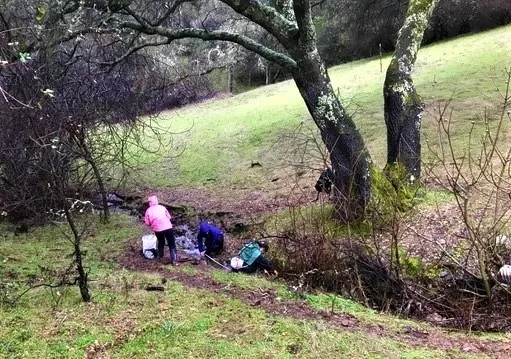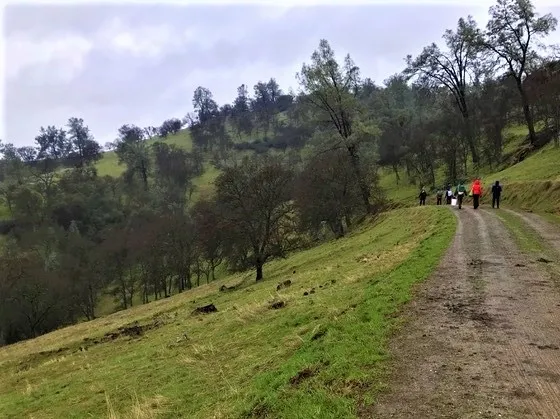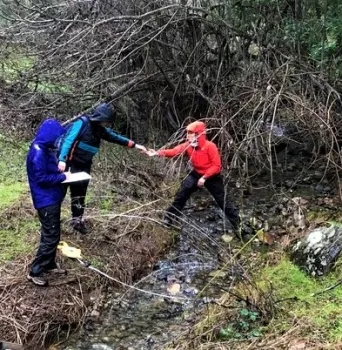After 21 years, Dr. Greg Pasternack's UC Davis Hydrology Field Methods Class has its final trip to SFREC
On February 9th, UC Davis Hydrology Professor Dr. Gregory Pasternack brought 13 lucky students from his Field Methods in Hydrology class to explore one of the watersheds here at Sierra Foothill Research & Extension Center. In his 21st and likely final year teaching this course, Dr. Pasternack was kind enough to share some reflections with us below:
“I always run this class trip in February and usually the view of Deer Creek across the canyon is stunning. In the final section before it convenes with the Yuba River, Deer Creek plunges an amazing 400 feet vertical per mile. With a flow of a couple hundred cfs that we typically see in February, it's just a stunning view. I once tried to hike down into that section from Mooney Flat Road, but the bedrock is very smooth and the waterfalls too extreme, even when dry. It's a postcard-worthy view for sure.


The Schubert catchment is small yet still quite adventurous to university students. Some students come from urban regions with little outdoor experience, while others are avid outdoor adventurers yet have little practical experience with doing science in nature. The goal of experiential learning is to put students into new situations with one-on-one experiences with nature where they have to use their knowledge and experience to problem solve. Not only are students learning science, but they are learning how to work together in a team, and even how to dress effectively to do safe outdoor research. People might be surprised to hear that part of the course involves teaching about clothing, but the technology of textiles for outdoor work has improved so much and students have little exposure to thinking about safety from a clothing perspective.

Lectures are the most efficient way to inject the most amount of information into the human brain in the shortest amount of time. Unfortunately, people tend to not retain most of that information unless they perceive a critical need to know something at a given moment in time. With quick access to the internet, people are becoming less knowledgeable and more dependent on search. What a field trip like this does is provide motivation to learn and retain lecture knowledge, because it will be required to be safe and effective during the field trip as well as to complete the associated homework assignment. Down in the Schubert watershed, cell phones don't work, so you have to really know what you're doing and not rely on technology to tell you what to do.”

